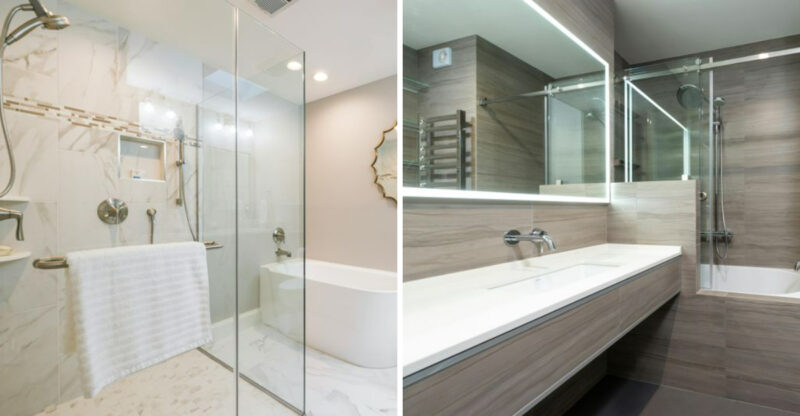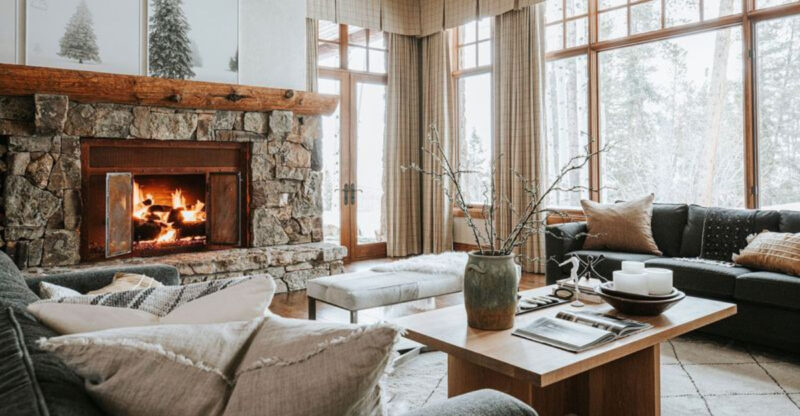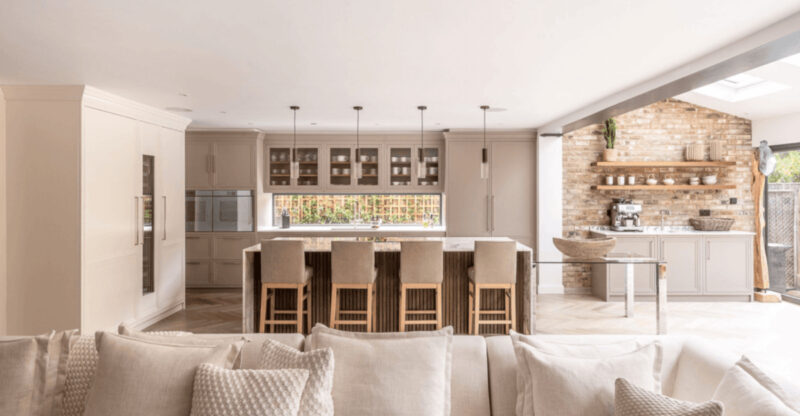How Can You Make Your Kitchen More Sociable 11 Tips From Interior Designers
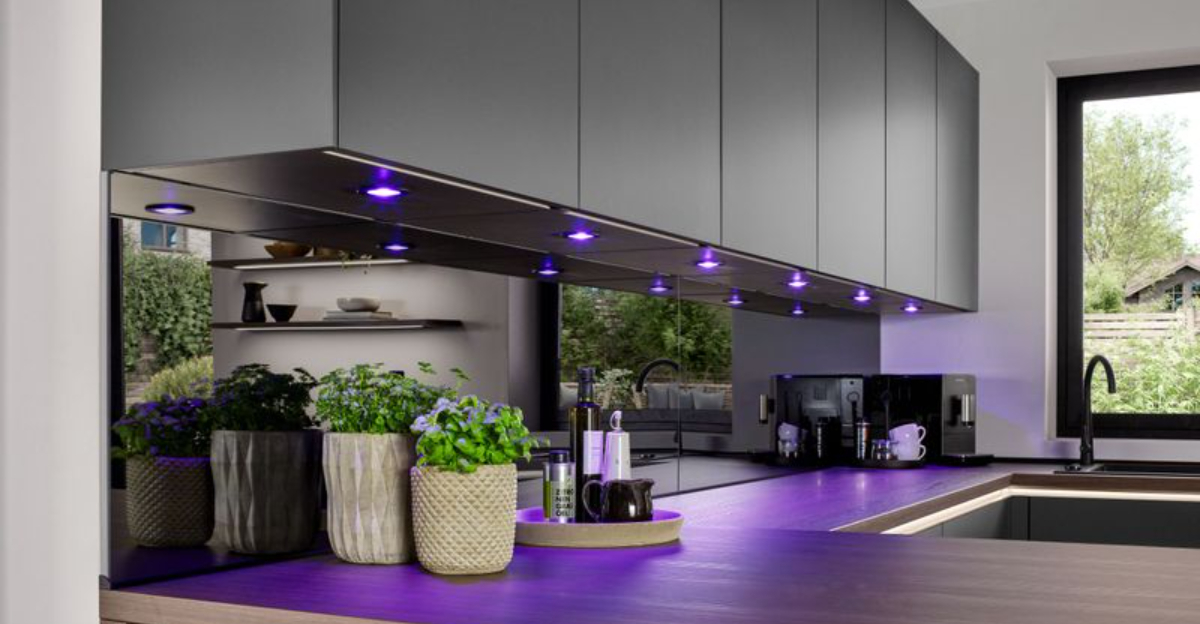
Kitchens aren’t just for cooking anymore. They’ve become the heart of our homes where family and friends naturally gather.
Creating a welcoming space that encourages conversation and connection can transform your kitchen from a purely functional area into the social hub of your home.
I’ve gathered expert advice from top interior designers on how to make your kitchen more inviting for guests and family alike.
1. Consider Your Layout
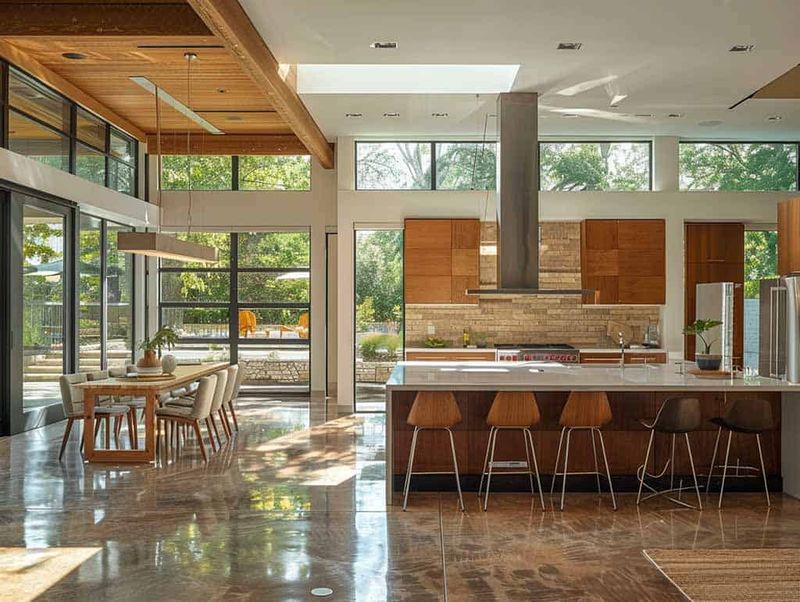
The way your kitchen is arranged makes all the difference in how people interact within it. A thoughtfully designed layout creates natural conversation zones while still keeping the cook connected to everyone else.
If you’re planning a renovation, think about removing walls that separate your kitchen from dining or living areas. This open-concept approach immediately makes the space more welcoming and inclusive. For existing kitchens, rearranging your work triangle (the path between sink, stove, and refrigerator) can create better flow for both cooking and socializing.
Remember that facing appliances toward your guests allows you to maintain eye contact while preparing meals a simple change that dramatically improves social interaction.
2. Create Seating Area
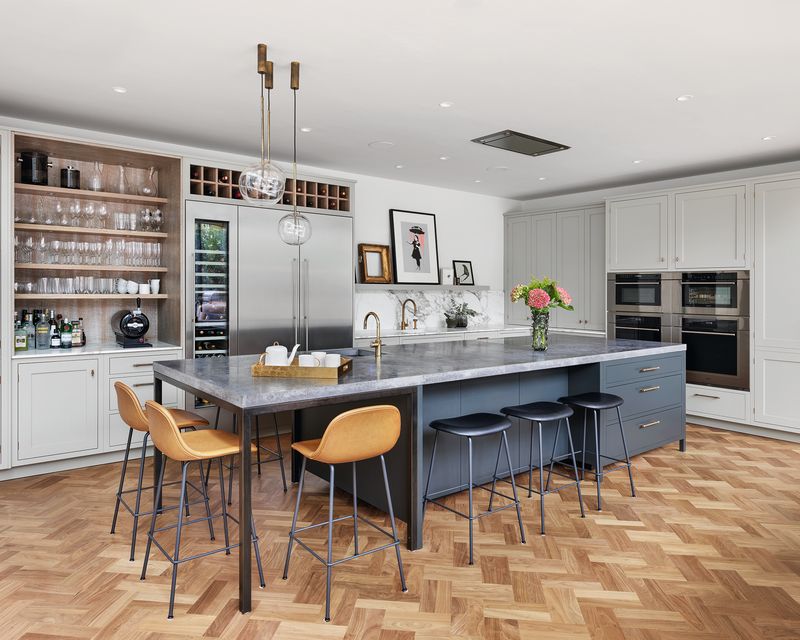
Adding comfortable seating transforms your kitchen into a place where people naturally want to linger. Beyond just functionality, seating invites guests to relax while you cook, turning meal preparation into a social event.
Look for opportunities to incorporate different seating options. Counter-height stools at an island provide casual perching spots, while a built-in banquette or window seat creates a cozy nook for longer conversations. Even a small bistro table with a pair of chairs in an unused corner can become a favorite gathering spot.
The key is positioning seats so people can comfortably chat with the cook without blocking traffic flow this way, cooking becomes less isolating and more of a shared experience.
3. Hide Appliances
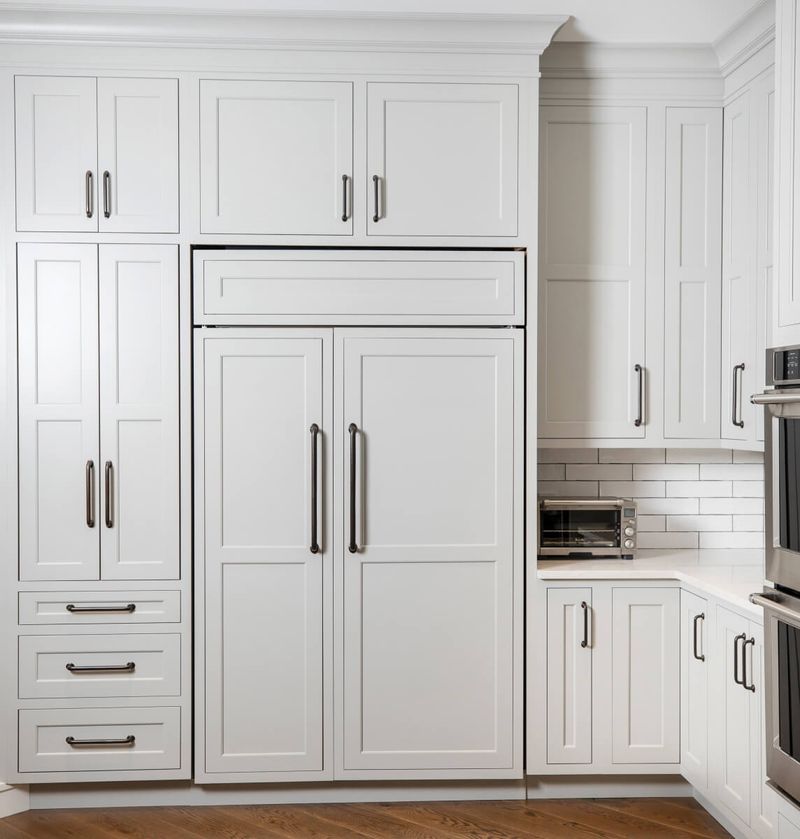
Visible appliances remind everyone they’re in a working kitchen, which can feel more utilitarian than social. Concealing everyday machines behind cabinet panels or in dedicated appliance garages instantly makes the space feel more like a living area.
Built-in refrigerators with custom panels that match your cabinetry create a seamless look that’s less industrial. Small appliances like toasters, coffee makers, and mixers can disappear into specially designed cabinets with retractable doors or dedicated nooks.
This approach doesn’t mean sacrificing function it simply shifts the visual focus from work to pleasure. When guests see fewer appliances and more beautiful finishes, they naturally feel more comfortable treating the kitchen as a social space rather than just a food prep area.
4. Add Freestanding Furniture
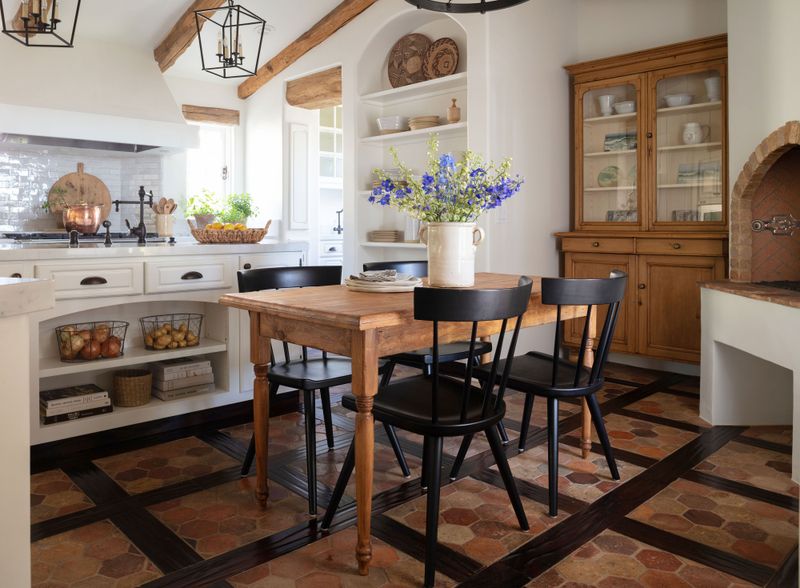
Breaking away from the all-built-in look can instantly make your kitchen feel more like a living space. A beautiful hutch, vintage sideboard, or antique table brings character that built-ins simply can’t match.
Freestanding pieces create a collected, evolved feel that invites people to relax, unlike the clinical perfection of matching cabinets. I love using a farmhouse table instead of an island it’s perfect for both food prep and gathering friends around for coffee. An antique chest repurposed for storage adds history and conversation starters.
These furniture pieces blur the line between kitchen and living space, making guests feel they’re in a comfortable room rather than a purely functional cooking area. This simple change dramatically shifts how people interact with your space.
5. Use Work Tables Instead of Islands
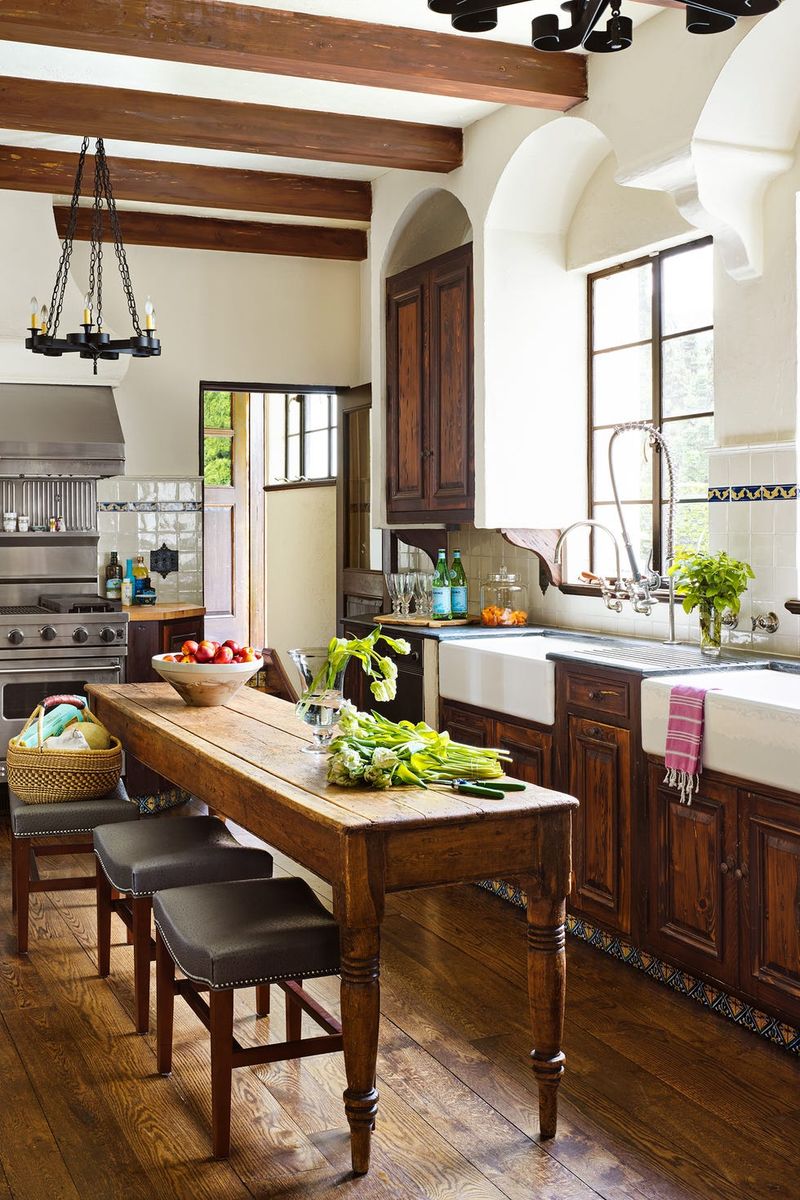
Work tables bring a friendly, approachable vibe that built-in islands often lack. Their open legs create visual lightness, making the kitchen feel more spacious and less dominated by cabinetry.
Unlike fixed islands, tables can be moved for different occasions pushed against a wall when you need floor space or centered when hosting a cooking party. The history of kitchen tables runs deep in our collective memory, subconsciously signaling “gather here” in a way that newer island concepts sometimes miss.
Height matters too counter-height work surfaces can create division, while table-height surfaces invite people to pull up a chair and stay awhile. This subtle difference transforms the kitchen from a place where some people work while others watch into a truly collaborative, social environment.
6. Embrace Open Shelving

Open shelves instantly make kitchens feel more welcoming and lived-in. When visitors can see your collection of beautiful dishes or cookbooks, the space feels personal rather than purely functional.
Arranging everyday items in plain view creates a relaxed atmosphere that encourages guests to help themselves. There’s something inherently inviting about being able to grab a mug without asking “which cabinet?” Mixing practical items with decorative pieces perhaps family heirlooms or travel souvenirs adds storytelling opportunities that spark conversation.
Don’t worry about perfect styling a slightly imperfect arrangement with items that actually get used creates an authentic feel that puts people at ease. This authenticity is what transforms a showroom-perfect kitchen into a space where people naturally want to gather and connect.
7. Include a Bar or Drinks Zone
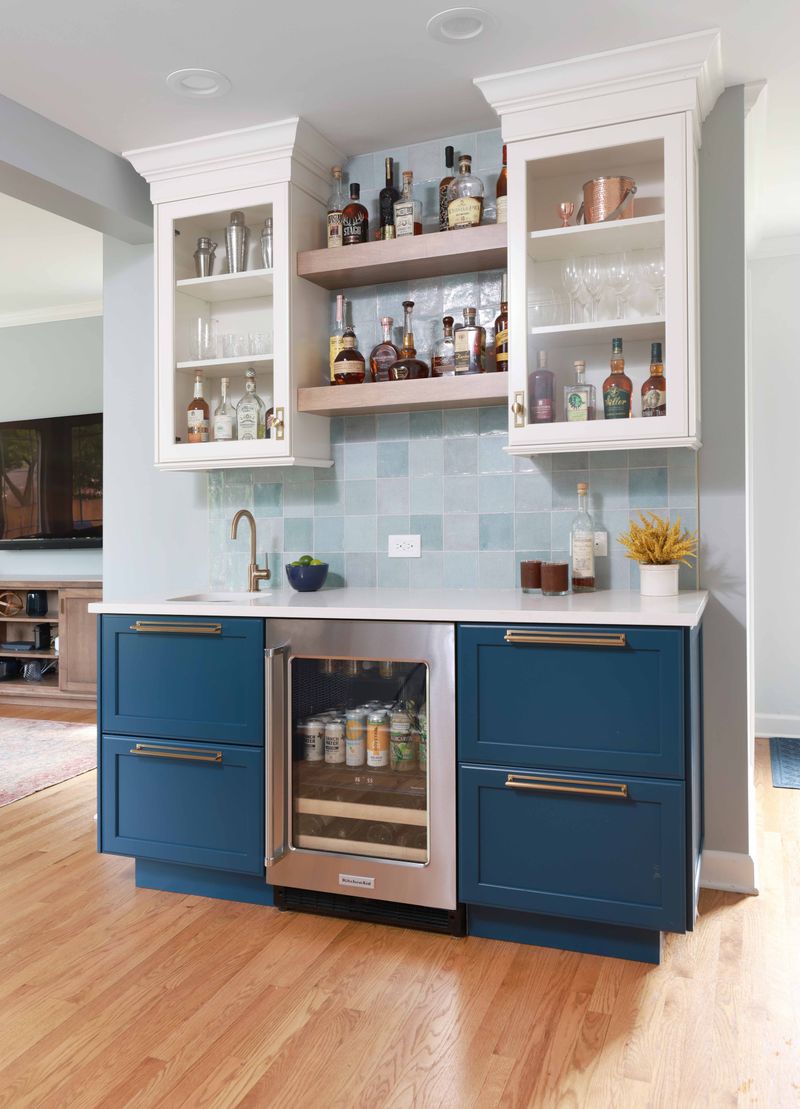
A dedicated drinks area acts like a social magnet in any kitchen. Creating a specific zone where guests can help themselves to beverages keeps them engaged while staying out of your cooking path.
This doesn’t require massive space even a small countertop with a wine rack, a few glasses, and perhaps a compact refrigerator creates a functional drinks station. Position it at the kitchen’s edge, creating a natural transition between cooking and entertaining zones.
The beauty of this approach is how it encourages self-service, allowing guests to refresh their drinks without feeling they’re interrupting the cook. This simple addition transforms the kitchen dynamic, creating natural gathering spots and conversation starters that make everyone feel more at home and involved in the social experience.
8. Layer Lighting

Thoughtful lighting instantly transforms the mood of your kitchen from purely functional to warmly social. Moving beyond basic overhead fixtures creates atmosphere that encourages people to linger.
Start with three essential layers: task lighting for work areas, ambient lighting for general illumination, and accent lighting to highlight architectural features or decor. Under-cabinet lights aren’t just practical they create a warm glow that makes the space feel intimate after dark. Adding dimmers to every switch gives you control over the mood for different occasions.
Don’t forget decorative fixtures that express personality perhaps pendant lights over an island or a small lamp on a sideboard. These unexpected touches make a kitchen feel more like a living space, signaling to guests that this is a place designed for comfort and conversation.
9. Personalise with Decor

Kitchens often lack the personal touches we naturally add to living spaces, but introducing meaningful decor transforms them from functional to inviting. Family photos, artwork, or collections displayed thoughtfully create instant conversation starters.
Think beyond typical kitchen decor a beautiful painting, a shelf of treasured objects, or even a small gallery wall brings personality that pre-packaged kitchen designs lack. Plants add life and softness to hard surfaces, while a vintage rug introduces color and pattern that makes the space feel considered.
These personal elements tell your story and signal to guests that this is a space meant for living, not just cooking. When visitors see objects that reflect your interests and history, they naturally feel more comfortable sharing their own stories, creating the foundation for meaningful social connection.
10. Soften with Textiles
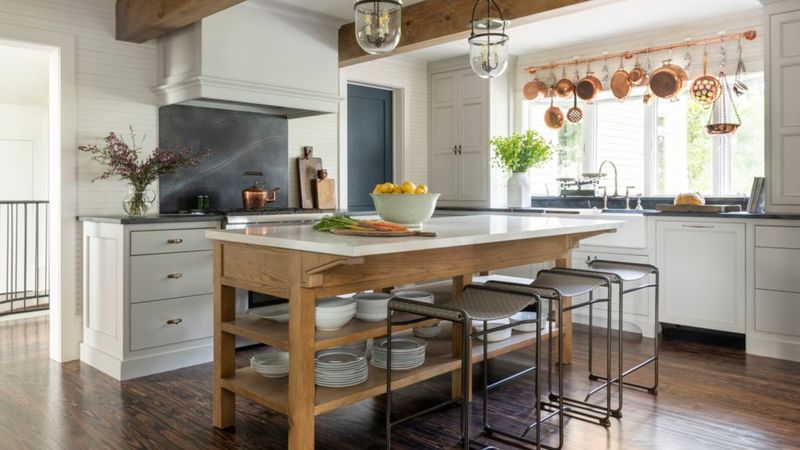
Kitchens are naturally full of hard, wipeable surfaces that can feel cold and unwelcoming. Adding soft textiles immediately counters this effect, making the space feel warmer and more inviting to guests.
Window treatments beyond basic blinds perhaps relaxed Roman shades or simple linen curtains soften light and acoustics while adding visual warmth. A washable runner rug defines gathering areas and makes standing more comfortable for longer conversations. Even simple cloth napkins in a basket signal that this is a space meant for sharing meals and stories.
Don’t overlook upholstery opportunities cushions on hard seating, a small upholstered stool, or even a slipcovered chair in an unused corner creates a place where someone might actually want to linger, transforming how the entire space functions socially.
11. Add Music or Sound System
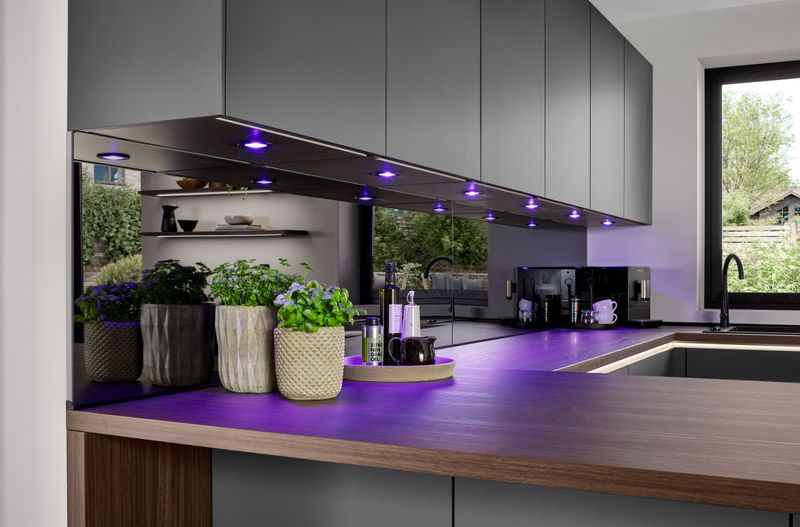
Sound dramatically influences how people feel in a space, yet it’s often overlooked in kitchen design. A thoughtfully integrated audio system creates atmosphere that naturally encourages people to relax and engage.
Hidden speakers that deliver clear sound without visual clutter are ideal consider ceiling-mounted options or small speakers tucked on shelves. Smart systems that allow easy control from your phone mean you can adjust volume or change playlists without interrupting conversation or cooking.
Music creates shared experience that fills awkward silences and gives energy to the space. The right soundtrack can transform dinner preparation from a chore into an event, encouraging guests to stay and chat rather than feeling they should leave you to work. This invisible element might be the most powerful social tool in your entire kitchen design arsenal.


